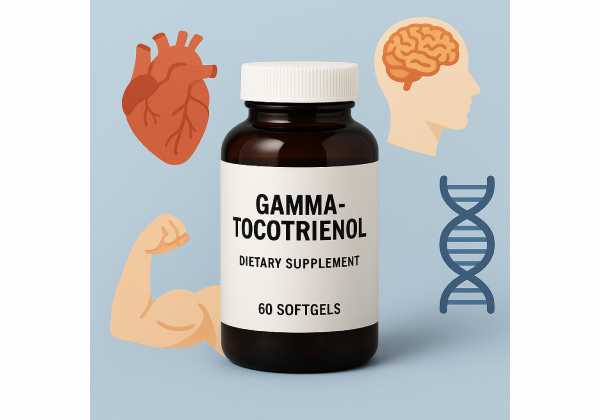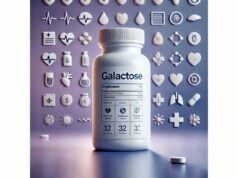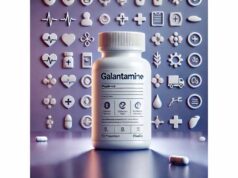
Gamma-tocotrienol (γ-T3) is one of the eight compounds in the vitamin E family. While alpha-tocopherol gets most of the spotlight, tocotrienols—especially the gamma and delta forms—have distinct properties that set them apart. They anchor more evenly in lipid membranes, modulate the mevalonate pathway involved in cholesterol synthesis, and influence inflammatory signaling. Early human trials and several recent systematic reviews suggest potential benefits for metabolic and liver health, with emerging data in nerve health. At the same time, γ-T3 is not a cure-all. Results vary with dose, formulation, and baseline health—and safety considerations matter if you use blood thinners or prepare for surgery. This guide synthesizes what is known now: how γ-T3 works, where the evidence is strongest, how to use it responsibly, and who should avoid it. You’ll also find practical dosage ranges, timing tips, and a straightforward summary of current research gaps.
Quick Overview
- May support liver health and metabolic markers, especially in nonalcoholic fatty liver disease (NAFLD).
- Mixed tocotrienols (often rich in gamma and delta) can modestly lower HbA1c in type 2 diabetes in some trials.
- Typical supplement range: 100–300 mg/day tocotrienols; clinical studies use 250–400 mg/day mixed tocotrienols or 600 mg/day delta-tocotrienol.
- Safety note: high doses may increase bleeding risk; stop 1–2 weeks before surgery and avoid combining with anticoagulants without medical supervision.
- Avoid if pregnant or breastfeeding, on warfarin/antiplatelets, or with bleeding disorders unless a clinician advises otherwise.
Table of Contents
- What is gamma-tocotrienol?
- What benefits are supported by evidence?
- How much per day and how to take it?
- What changes results: form, food, and timing?
- Safety, side effects, and who should avoid
- Evidence at a glance: what we know and don’t
What is gamma-tocotrienol?
Gamma-tocotrienol (γ-T3) belongs to the tocotrienol subgroup of vitamin E. Vitamin E includes tocopherols (α, β, γ, δ) and tocotrienols (α, β, γ, δ). Tocotrienols share the same antioxidant chromanol head as tocopherols but feature an unsaturated tail with three double bonds. That unsaturated tail lets tocotrienols embed differently in cell membranes, moving and distributing more evenly across lipid layers. In practical terms, this can enhance their ability to intercept free radicals and influence lipid-regulated signaling, including enzymes in the mevalonate pathway that drive endogenous cholesterol synthesis.
Natural sources of γ-T3 include palm oil extracts (tocotrienol-rich fraction, “TRF”), rice bran oil, and annatto. Palm TRF typically contains a mix of tocotrienol isomers plus some α-tocopherol. Annatto-derived vitamin E is mostly tocotrienols (primarily δ with a smaller fraction of γ) and minimal α-tocopherol. Many supplements label their content as “mixed tocotrienols,” often specifying milligrams of each isomer. Because “tocotrienol” products vary by source and ratio, check the supplement facts panel for the actual γ-T3 content.
Mechanistically, γ-T3 appears to:
- Act as a chain-breaking antioxidant in lipid membranes.
- Modulate NF-κB and related inflammatory pathways.
- Down-regulate HMG-CoA reductase activity (via post-transcriptional effects), a key mevalonate-pathway enzyme.
- Influence endoplasmic reticulum (ER) stress responses that intersect with liver fat accumulation and fibrosis.
These properties underpin the health areas where γ-T3 is most studied: metabolic health (glycemic control), lipid handling, and liver steatosis. Importantly, while preclinical data are abundant, human evidence varies by condition and formulation. Many clinical trials use mixed tocotrienols (rich in γ and δ) rather than isolated γ-T3, so benefits observed at the “tocotrienol” level are often attributable to the γ/δ pair rather than γ-T3 alone.
If you’re comparing γ-T3 to α-tocopherol (the common vitamin E standard), remember two points. First, α-tocopherol is the current reference for classic vitamin E deficiency. Second, tocotrienols are not interchangeable with α-tocopherol for that purpose, but they may have distinct bioactivities that α-tocopherol lacks or expresses differently. The goal isn’t to swap one for the other; it’s to decide whether adding γ-T3 (often within a mixed tocotrienol product) makes sense for your specific health aims, medications, and diet.
What benefits are supported by evidence?
Liver health (NAFLD/NASH). Among all indications, the most consistent human signals for tocotrienols—especially δ- and γ-rich formulas—are in nonalcoholic fatty liver disease. Randomized controlled trials (RCTs) have reported improvements in liver enzymes (ALT/AST), inflammatory and oxidative stress markers, and, with longer use, ultrasound-graded steatosis. Importantly, evidence covers both palm-derived TRF (mixed tocotrienols with some α-tocopherol) and annatto tocotrienols (primarily δ with some γ). Systematic reviews summarizing human and preclinical studies conclude that tocotrienols can improve biochemical profiles and sometimes imaging, with magnitude depending on disease severity, dose, and duration. Mechanistically, γ-T3 appears to reduce ER stress signaling and pro-fibrotic pathways while supporting lipid oxidation and dampening de novo lipogenesis.
Glycemic control in type 2 diabetes. A recent systematic review and meta-analysis of RCTs in type 2 diabetes found that tocotrienol-rich fraction supplementation (typically 250–400 mg/day) led to a modest but statistically significant reduction in HbA1c, with larger effects in shorter-duration diabetes and when baseline HbA1c was higher. Blood pressure and high-sensitivity CRP changes were generally not significant. That pattern fits a “modest adjunct” role: meaningful for some patients but not a substitute for standard care. Most trials used mixed tocotrienols that were rich in γ and δ; as such, any HbA1c effect likely reflects the combined activity of these isomers rather than γ-T3 alone.
Nerve health (diabetic peripheral neuropathy). Phase II trials using tocotrienol-rich vitamin E (commonly 400 mg/day) have reported improvements in certain nerve conduction velocities over 6–12 months. These changes are objective but specific (e.g., tibial motor nerve conduction velocity), and they diminish after washout, suggesting a need for sustained intake to maintain effect. Clinical relevance varies and should be interpreted alongside glycemic control and comprehensive neuropathy management. Again, products tested were mixed tocotrienols, with γ-T3 as a major constituent.
Lipids and cardiometabolic markers. Findings on LDL-C lowering in humans are mixed. Some RCTs show small improvements in lipid profiles with TRF, while others report neutral outcomes. Variability likely reflects differences in dose, background diet (notably habitual palm oil intake in some cohorts), and whether α-tocopherol is present in the formula. Preclinical data suggest that γ- and δ-tocotrienols down-regulate mevalonate-pathway activity, but that mechanism does not guarantee clinically significant LDL-C reductions across the board. Expect modest effects at best, and prioritize established lipid-lowering therapies where indicated.
Inflammation and oxidative stress. Tocotrienols consistently show antioxidant and anti-inflammatory activity in cell and animal models. Human trials report heterogeneous results: some reductions in oxidative stress markers (e.g., malondialdehyde) and select inflammatory cytokines, others neutral. Formulation and dose matter, as does the disease context: effects tend to be more detectable when baseline oxidative stress or inflammation is higher.
Cognition and neuroprotection. Preclinical studies are active, but human evidence for cognitive outcomes remains preliminary. At present, γ-T3 should not be used with the expectation of preventing or treating neurodegenerative disease; any such use remains investigational.
Bottom line on benefits. If your goals are liver fat reduction and metabolic support, γ-/δ-rich tocotrienols have the most encouraging human data, particularly over 3–12 months. If you’re targeting glycemic control, expect modest HbA1c improvements (a few tenths of a percent) at studied doses (250–400 mg/day mixed tocotrienols). For lipids or general inflammation, benefits are possible but inconsistent; do not replace prescribed therapies with tocotrienols.
How much per day and how to take it?
Common supplemental range. For general wellness or to “test the waters,” many products supply 100–300 mg/day of mixed tocotrienols, often split once or twice daily. In clinical studies, effective ranges are typically 250–400 mg/day for mixed tocotrienols (γ-/δ-rich) over 8–24 weeks, while some NAFLD trials used 600 mg/day delta-tocotrienol (300 mg twice daily). Because your product may not list γ-T3 specifically, check how many milligrams of γ-T3 are within the total tocotrienol content. If your goal is to emphasize γ-T3, look for formulas that disclose isomer ratios or use palm TRF with a known γ-fraction.
Timing with meals. Tocotrienols are fat-soluble. Take them with a meal containing fat (e.g., olive oil, avocado, yogurt, eggs) to enhance absorption. Some self-emulsifying formulations also aim to boost bioavailability; in a crossover study, a γ/δ-tocotrienol formulation showed higher plasma γ-T3 exposure than a standard TRF, under single-dose conditions. If your supplement uses a “self-emulsifying” or “lipid-based” delivery, the label will usually say so.
Once vs twice daily. Either can work. Twice-daily dosing helps maintain steadier exposure but is not strictly required for everyone. Your choice can follow convenience—just anchor dosing to meals.
Standalone γ-T3 vs mixed tocotrienols. Pure γ-T3 supplements exist but are less common than mixed formulas. Most human data use mixed γ/δ tocotrienols (with or without small amounts of α-tocopherol). If your target is NAFLD or glycemic adjunct support, matching the studied compositions (mixed tocotrienols or δ-dominant with some γ) is reasonable.
How long to try. For metabolic and liver outcomes, commit to 12 weeks before judging response; many RCTs run 12–24 weeks, with some longer. For neuropathy, studies often extend to 6–12 months. Recheck labs (liver enzymes, HbA1c, lipids) at intervals aligned with your clinician’s plan.
What to pair with γ-T3.
- Diet and weight management: Calorie control, Mediterranean-style patterns, and reduced refined carbohydrates synergize with tocotrienols for NAFLD and diabetes.
- Omega-3 fatty acids: Can complement lipid and inflammatory pathways.
- Curcumin or other polyphenols: Preclinical synergy exists, but human data are limited; avoid excessive stacking without supervision.
- Avoid mega-doses of α-tocopherol unless directed: High α-tocopherol may compete for transport proteins and could blunt tissue levels of other vitamin E isomers; balance matters.
Practical starting plans (illustrative):
- Metabolic support (T2D adjunct): 125–200 mg mixed tocotrienols with two meals daily (total 250–400 mg/day) for 12 weeks, then reassess HbA1c and tolerance.
- Liver health (NAFLD focus): 200 mg mixed tocotrienols twice daily (total ~400 mg/day), or a δ-dominant product at the manufacturer’s directed dose. Integrate with weight loss, physical activity, and reduced fructose and alcohol.
- General antioxidant support: 100–150 mg/day mixed tocotrienols with the main meal.
Always coordinate dosing with your healthcare professional, especially if you take anticoagulants, antiplatelets, or have upcoming surgery.
What changes results: form, food, and timing?
1) Formulation and delivery system. Tocotrienols’ lipophilic nature means delivery matters. Self-emulsifying or lipid-based softgels can raise plasma exposure compared with standard oil-based capsules, at least in single-dose studies. If you’ve tried a lower-bioavailability product without results, a better-absorbed formula (or taking with a higher-fat meal) may change the outcome.
2) Isomer composition (γ vs δ). Human metabolic and liver trials frequently use γ/δ-rich blends. Both isomers contribute, but they may emphasize different pathways (e.g., δ-tocotrienol is often highlighted in NAFLD data, whereas γ-T3 shows strong preclinical anti-inflammatory and ER-stress effects). If your label doesn’t disclose isomer ratios, ask the manufacturer or select a brand that does. A product drawn from palm TRF often contains considerable γ-T3; annatto concentrates are typically δ-dominant with some γ.
3) Co-ingested nutrients.
- Meal fat: Increases absorption; take tocotrienols with food.
- Excess α-tocopherol: High α-tocopherol may limit tissue uptake of other vitamin E forms by competing for hepatic transport. Occasional α-tocopherol is fine, but avoid high-dose α-tocopherol alongside γ-T3 unless clinically indicated.
- Alcohol and fructose: Worsen hepatic fat; their reduction can amplify the benefits you’re hoping to see from tocotrienols in NAFLD.
- Statins: Theoretically additive on the mevalonate pathway; practical benefits or interactions are not fully defined. Keep your prescriber in the loop.
4) Baseline status and disease duration. Meta-analytic data suggest larger HbA1c reductions when baseline HbA1c is higher and duration of diabetes is shorter. Similarly, in NAFLD, greater improvements are seen with longer supplementation (≥24 weeks) and less advanced disease. Manage expectations accordingly.
5) Adherence and consistency. Benefits tend to wane after cessation (e.g., neuropathy trials noted regression toward baseline after washout). If you respond, consider steady intake at the lowest effective dose, with periodic re-evaluation.
6) Lab interpretation and monitoring.
- Liver enzymes (ALT/AST): Look for relative changes (e.g., 10–30% reductions) over several months, in tandem with weight and imaging.
- HbA1c: Expect modest shifts (a few tenths of a percent), not drug-like drops.
- Lipids: Be ready for neutral results; continue evidence-based lipid therapy as prescribed.
7) Product quality. Choose products with: third-party testing (identity/potency), disclosed isomer content (mg of γ-T3/δ-T3), and clear dosing instructions. Temperature stability matters—store away from heat and light to limit oxidation.
Safety, side effects, and who should avoid
General tolerance. Tocotrienols are generally well tolerated in clinical studies at 250–400 mg/day for several months, and δ-dominant regimens up to 600 mg/day have been used in NAFLD RCTs. Reported side effects are usually mild and GI-related (e.g., dyspepsia, soft stools), particularly when taken without food. Take with a meal to reduce GI discomfort.
Bleeding risk and medications. Like other vitamin E forms, tocotrienols may increase bleeding tendency at higher doses, especially when combined with warfarin, DOACs, or antiplatelet agents (e.g., clopidogrel). If you’re on such therapy, consult your clinician before starting, and monitor INR or bleeding symptoms as advised. Discontinue 1–2 weeks before elective surgery.
Pregnancy and lactation. Safety data are insufficient. Avoid routine supplementation unless specifically recommended by your obstetric clinician.
Liver disease and labs. If you have active hepatitis, cirrhosis, or unexplained elevated transaminases, involve a hepatology professional to determine whether tocotrienols fit your plan and to set lab-monitoring intervals.
Allergies and sensitivities. Tocotrienols are often derived from palm or annatto. The active compounds are highly purified, but if you have known sensitivities to source oils or excipients (gelatin, glycerin, soy derivatives), check labels carefully.
Children and adolescents. Pediatric data are limited. Do not use outside clinician guidance.
Overuse and stacking. Avoid combining multiple high-dose antioxidant supplements without a rationale. Very high antioxidant loads can, paradoxically, blunt some training adaptations or interact unpredictably with redox-sensitive drugs. Keep your regimen simple and purposeful.
When to stop and seek care. Stop supplementation and seek medical advice if you experience unusual bleeding, easy bruising, persistent GI upset, rash or hives, shortness of breath, or marked fatigue. Report any supplement use to your clinician before procedures and at medication reconciliations.
Evidence at a glance: what we know and don’t
Where evidence is strongest
- NAFLD: Multiple RCTs and a recent systematic review suggest tocotrienols (δ-dominant with γ present, or mixed γ/δ) can improve liver enzymes and, with longer duration, ultrasound-graded steatosis. Mechanistic links include reduced ER stress, improved lipid handling, and dampened inflammatory signaling.
- Type 2 diabetes (adjunct): A 2023 meta-analysis of RCTs in T2D reports modest HbA1c reductions (often 250–400 mg/day mixed tocotrienols), especially in those with shorter disease duration or higher baseline HbA1c.
- Neuropathy (selected measures): Phase II trials indicate improvements in specific nerve conduction parameters at ~400 mg/day mixed tocotrienols over 6–12 months, with effects fading after washout.
Where evidence is promising but limited
- Lipid lowering: Results are inconsistent; any LDL-C reduction is generally small.
- Systemic inflammation: Mixed findings across biomarkers; benefits may concentrate in higher-inflammation states.
- Cognition and neurodegeneration: Mostly preclinical; clinical efficacy unproven.
Dosing patterns from trials
- Mixed tocotrienols (γ/δ-rich): 250–400 mg/day for 8–24 weeks (metabolic outcomes); ~400 mg/day up to 12 months (neuropathy).
- δ-dominant tocotrienol (with γ): 600 mg/day (300 mg twice daily) for 24–48 weeks (liver outcomes).
- Isolated γ-T3: Fewer human outcome trials; singled-out γ-T3 is better represented in mechanistic and bioavailability studies.
Bioavailability considerations
- Tocotrienols accumulate in tissues but circulate at lower levels than α-tocopherol. Self-emulsifying formulations can increase plasma γ-T3 exposure versus standard TRF in crossover testing. Absorption improves with dietary fat.
Safety snapshot
- Generally well tolerated at clinically used doses. Watch bleeding risk, drug interactions, and perioperative timing. Insufficient data in pregnancy and lactation.
Practical takeaways
- If you have early NAFLD or T2D and your clinician approves, a 12–24 week trial of 250–400 mg/day mixed tocotrienols (γ/δ-rich), taken with meals, is a pragmatic approach. Pair with diet, exercise, and your standard therapies; judge success by labs and how you feel—not by expectations of rapid change.
- For γ-T3-focused users, seek formulas with disclosed isomer content or δ-dominant blends that still include γ; match studied regimens and verify quality.
References
- Tocotrienol in the Management of Nonalcoholic Fatty Liver Disease: A Systematic Review 2023 (Systematic Review)
- Effects of Tocotrienol-Rich Fraction Supplementation in Patients with Type 2 Diabetes: A Systematic Review and Meta-Analysis of Randomized Controlled Trials 2023 (Systematic Review)
- Health Benefits of Palm Tocotrienol-Rich Fraction: A Systematic Review of Randomized Controlled Trials 2024 (Systematic Review)
- Delta-tocotrienol supplementation improves biochemical markers of hepatocellular injury and steatosis in patients with nonalcoholic fatty liver disease: A randomized placebo-controlled trial 2020 (RCT)
- A new formulation of Gamma Delta Tocotrienol has superior bioavailability compared to existing Tocotrienol-Rich Fraction in healthy human subjects 2015 (Randomized Crossover Bioavailability Study)
Disclaimer
This guide is educational and does not replace personalized medical advice, diagnosis, or treatment. Tocotrienols can interact with medicines (especially anticoagulants and antiplatelets) and may not be appropriate during pregnancy, breastfeeding, before surgery, or with certain medical conditions. Always consult a qualified healthcare professional before starting, stopping, or changing any supplement or therapy. If you experience adverse effects, discontinue use and seek medical care.
If you found this helpful, consider sharing it with friends or on Facebook or X, and follow our updates for more evidence-based guides. Your support helps us continue creating high-quality, reader-first content.










